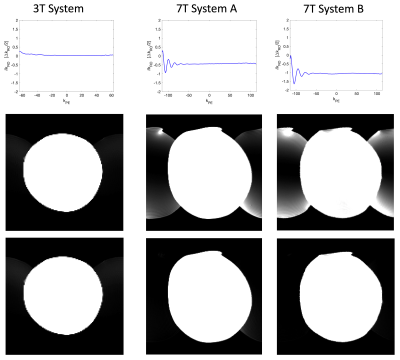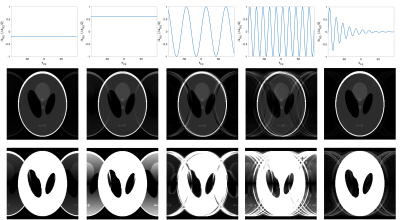Pål Erik Goa1 and Neil Peter Jerome2
1Dept. of Physics, NTNU, Trondheim, Norway, 2Siemens Healthineers, Trondheim, Norway
1Dept. of Physics, NTNU, Trondheim, Norway, 2Siemens Healthineers, Trondheim, Norway
Significant temporal variations in the linear offset in odd-even k-space lines is observed in Echo-Planar Imaging at 7T with classic Nyquist ghost as a result. Preliminary analysis indicates the issue can be corrected using extended navigators the captures the oscillatory behavior.

Figure 3: Experimental results for three different MR-systems. Top row: single channel measured values of line-by-line δkRO- δkRO,nav. For the 3T system there are no oscillations or offset observed. For the two 7T systems, the temporal development is quite similar, with both initial oscillations and a significant offset between the navigator-measured δkRO and the equilibrium line-by-line value. Middle row: reconstruction based on standard navigator-method. Bottom row: reconstruction using line-by-line δkRO correction. W/L = [0, 0.1*median(phantom)].

Figure 2: Appearance of Nyquist ghost for different temporal development of δkRO. Top row: plot of δkRO in units of ΔkRO as function of kPE. Middle row: resulting images with window/level (W/L) = [0, max], bottom row: same images but with W/L = [0,0.1*max]. Increasing the linear phase offset (columns 1-2) produces the expected Nyquist ghosting; an oscillating offset introduces more complex ghosting dependent on the frequency (columns 3-4), where a decaying oscillation will have a reduced effect according to the decay time (column 5).